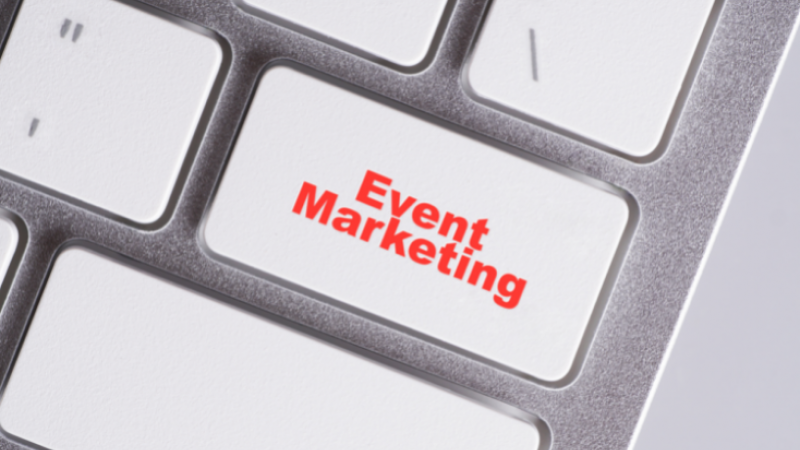How to plan events more holistically as part of the overall marketing mix
Deciding to host an event doesn’t come on a whim – it’s part of the larger marketing process of aligning tactics based on where the target is on the customer journey - awareness, consideration, purchase, adoption, loyalty - and getting them to the next stage.
First, marketers build a programme that satisfies a specific audience (customer, prospects, partners, users, supporters, etc) to serve a particular objective (sell products, subscribe to service, etc) at a unique stage of the customer journey (conversion, purchase, etc).
Next, they’ll determine the tactic that best serves that audience and objective. Sometimes, that tactic is an event, roadshow, exhibition stand, webinar or any number of other event types or formats.
However, doing things “the way we’ve always done them” is no longer a strategy for success. In fact, it’s a recipe for failure.
To thrive today, marketers should plan events more holistically across both in-person and digital formats, folding virtual and hybrid experiences into existing brand strategies.
At Cvent, this is called the ‘New Event Marketing Opportunity’ - maximising value and managing risk by mastering different event types and formats using a cohesive and collaborative approach that embraces virtual technology.
This new approach shouldn’t be viewed as a burden, but as a benefit; virtual and hybrid events enhance marketers’ opportunity to reach and engage new and larger audiences, increase brand awareness and engagement, deliver more insights and, ultimately, drive revenue.
It does involve change management from senior leaders though. A programmatic, systemic events channel requires reimagining traditional roles, removing silos, standardising processes, incorporating dynamic data, and streamlining technology across the entire marketing function.
The New Event Marketing Opportunity is less focused on job titles and more on a team-based approach that is aligned with strategy and technology. It encourages an in-house culture of ‘what can I do to help my teammates’ as opposed to ‘that’s not my job’.
Historically, event planning teams have focused on executing one type of event (trade shows, road shows, customer conferences etc), one event at a time, throughout the organisation’s calendar year.
The majority of those events were in-person. Wash-rinse-repeat. Consequently, there’s been a disconnect between event goals and event success metrics.
The success metrics that are typically measured by event planners are: registration numbers, attendee satisfaction, cost per attendee, and net promoter score.
However, the actual outcomes companies are seeking when hosting and attending events can be much different: brand awareness, lead generation, driving sales, retaining customers and establishing loyalty.
Marketers have visibility into the programmatic, revenue-based objectives of measurement. They can aid planners and incorporate events into the broader marketing mix for better reporting and proof of impact.
They also have the specific knowledge and expertise to not only measure these goals, but deliver on them.
To truly measure and support an event’s success, data must be brought online, and marketers must be involved in strategy.
Marketing automation systems can become a “single source of truth” for customer and prospect information and ROI attribution, but the events channel generates a sea of its own unique data and requires specific event technology to consolidate and then integrate.
MAP and CRM tools won’t cut it for events; you need registrations systems, production tools, engagement methods, and more — specific event technologies that can deliver powerful results by combining them with a more traditional marketing tech stack.
By integrating marketing technologies like Salesforce, Sugar CRM, Marketo, Eloqua, and others through a single platform, marketers can support events with a true, complete picture of attendees.
Technology can also help to deliver lead volume from events, prioritise the most qualified leads to sales in hours, not days and provide real-time data reflecting attendees’ interests to determine the next best action or offer.
This process of integrating event data with the rest of the data in the CRM and marketing tech stack finally gives events the ROI attribution they deserve.
As attendees interact with your assets and channels, you’ll get a full picture of attendees’ interests, as well as cross-event and cross- channel visibility, which ultimately makes your entire event channel more impactful.
In conclusion, the New Event Marketing Opportunity bridges the gap between marketers and event planners for all event types and formats.
To take full advantage, you’ll need a single specialised event marketing and management technology platform to seamlessly transition between event types and formats and provide increased efficiency, a single source of truth for all event data, a programmatic view of all activity and a consistent way of analyzing event success and attendee behaviours.
To find out more about how to take advantage of the new marketing opportunity, visit cvent.com/eventopportunity




